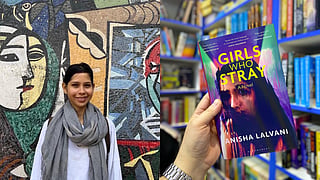- HOMEGROWN WORLD
- #HGCREATORS
- #HGEXPLORE
- #HGVOICES
- #HGSHOP
- CAREERS
- ABOUT US
- CONTACT US

As kids, Independence Day meant early mornings at school, the crisp white of freshly ironed uniforms, the familiar swell of patriotic songs, performances that ranged from folk dances to dramatic skits, and then, of course, the sweet, sticky handful of boondi that wrapped the day in a sugar rush. Back then, freedom was a festive patriotic mood more than a lived reality. As we got older, those simple celebrations deepened into a more nuanced and sobering understanding of what independence in India really means, and what it should mean.
That shift is reflected in the stories we tell this month. In exploring Bharoto Bhagyo Bidhata, the original poem from which our national anthem was drawn, we’re reminded of how words shape identity and collective pride. Partition histories force us to confront the costs of freedom — the loss, displacement, and unresolved grief that came with the line that split nations. And in films like Jai Bhim Comrade, the lens turns to the caste injustices and systemic violence that persist even decades after 1947, questioning whether the promises of independence have been equally kept.
We hope these threads challenge us to see freedom not as a milestone reached in 1947, but as a promise that must be renewed — in justice, in equality, and in the stories we choose to remember. Here's what we have for you this week:
'Matcha' By OAFF & Savera
OAFF & Savera's latest track began as a playful solution to a rainy-day matcha craving in Goa — and blossomed into a breezy pop track that perfectly captures the flirtatious warmth of early romance, blending summery groove, layered synths, and intimate vocals into a feel-good anthem for cozy in-between moments.
Listen to it here.
Sonic Archives By Sakré x Alkersal Avenue
As part of Alserkal Avenue's Summer Programme, Bangalore-based beatmaker Sakré visits some of his favourite spots around the city like the Indian Coffee House on MG road, the 400-year-old banyan tree in JP Nagar and the Shortwave Radio Museum in Basaveshwarnagar performing quick SP404 sets crafted by reimagining old samples and experimenting with new sounds.
Check out the series here.
'The Taste of Summer' By Sambit Dattachaudhuri
In Sambit Dattachaudhuri's latest short film, the sudden arrival of a nor’wester on a sweltering day becomes the backdrop for a deeply personal return home. The film lingers on intimate rituals like stirring chicken curry, feeding stray dogs, imagining the taste of sun-ripened mangoes, that transform into vessels of memory and yearning. Layered with textures of light, weather, and unspoken bonds, it evokes the magic of a homecoming filled with nostalgia.
Watch the trailer for the short film here.
'Girls Who Stray' By Anisha Lalvani
In Girls Who Stray, Anisha Lalvani unpacks the quiet discontent of contemporary urban India — its sense of alienation, moral drift, and the invisible rules that shape who belongs. Through a narrator moving between privilege and precarity, the novel explores desire, restlessness, and the uneasy freedoms offered by modern city life, revealing how easily they can turn claustrophobic.
Get the book here.
The Bangalore's Comet sneaker brand collaborates with Naru Noodle Bar for a sneaker drop bringing together the city's streetwear scene and evolving food culture. Inspired by ramen-making, the sneaker carries details like a built-in chopstick holder and noodle-patterned accents, turning culinary storytelling into wearable design. The drop celebrates cross-disciplinary creativity where fashion borrows from the kitchen, and both become part of a larger cultural language rooted in craft, community, and play.
Get your pair here.
Non-Residency By Rajiv Menon
Non-Residency, curated by LA-based Indian-American gallerist Rajiv Menon at the historic Jaipur Centre for Art, reframes diasporic artists not as outsiders but as vital contributors to India’s evolving modern art story. Set within the City Palace, the show brings together South Asian creatives whose work across painting, sculpture, textiles, and multimedia embraces hybridity, displacement, and memory as creative forces, rather than deficits. By staging this symbolic homecoming, the exhibition underscores how diaspora can enrich and redefine our understanding of Indian art.
Read more about it here.
If you enjoyed reading this here's more from Homegrown:
Sugar, Milk, & Magic: How Migration & Assimilation Shaped Parsi Desserts
Sneha Yatra '71: The Forgotten Legacy Of India's Very Own Woodstock
